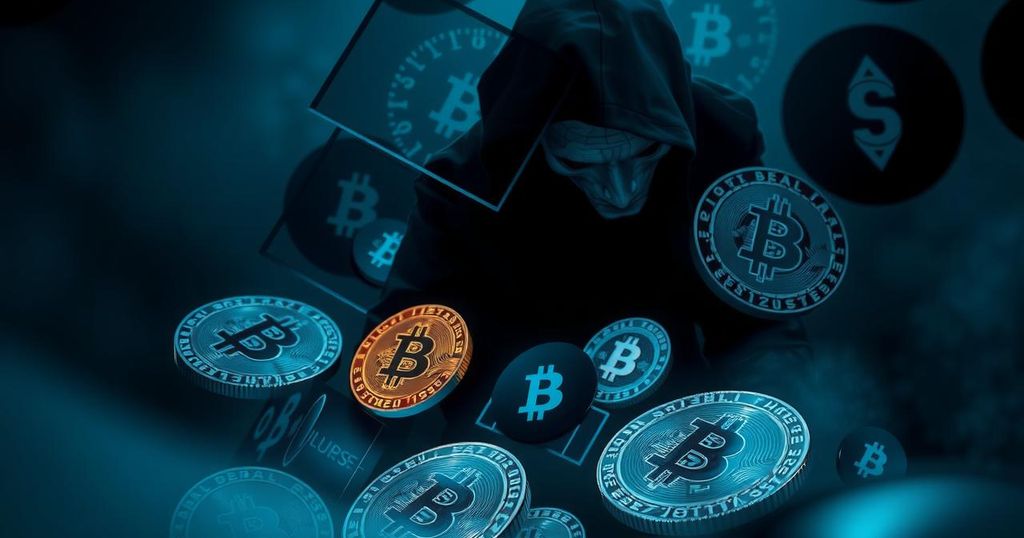U.S. Government’s Strategic Bitcoin Reserve: Billions in Seized Crypto
President Trump’s new executive order aims to create a Strategic Bitcoin Reserve, potentially holding over $21 billion in seized cryptocurrencies. While the move supports the legitimization of digital assets, it has sparked discussions about the implications for crypto’s foundational ideals. Experts predict that with improved management practices, the government will better secure its growing crypto holdings.
In a surprising move that’s got crypto enthusiasts buzzing, President Trump recently signed an executive order aiming to establish what is being termed the “Strategic Bitcoin Reserve.” This initiative isn’t just about bitcoin; it looks to create a comprehensive digital asset stockpile that will likely include billions in seized cryptocurrencies from various federal cases. While details are scant, estimates suggest the reserve could top $21 billion in digital assets, leading to speculation about the potential impacts on the market.
The strategic reserve is meant to centralize fragmented government crypto assets—a necessity, given the U.S. had no clear plan for its digital currencies prior to this order. Some experts, like Eric Jardine from Chainalysis, noted that before this, the government was merely off-loading seized assets through sales or restitution to crime victims. With Trump’s executive order, the focus is changing, aiming instead for a more organized approach to managing these digital treasures.
Chainalysis has delved into the crypto wallets associated with the U.S. government, uncovering substantial holdings. Their analysis found that the top 20 digital assets owned by the government are valued at around $20.9 billion. A whopping $20.4 billion of this is in bitcoin, with a remaining $493 million spread across various lesser-known tokens and stable coins. These assets have mostly been obtained through seizures related to various criminal activities, like scams and thefts.
However, the figures might seem a bit underwhelming when compared to the U.S. Strategic Petroleum Reserve, which holds about $25 billion in oil. And while it’s easy to see how these digital assets could be positioned similarly to gold, experts warn that having national reserves in cryptocurrencies benefits only current investors, potentially inflating their value further.
There’s been notable excitement about the establishment of these reserves within the crypto community. Sergey Nazarov, a co-founder at Chainlink, expressed optimism, stating that this could signify the government’s new perspective of viewing cryptocurrencies similarly to traditional assets. However, not all members of the community share the enthusiasm. Vitalik Buterin, co-founder of ethereum, raised a notable point about the potential ramifications on crypto’s foundational ideals of decentralization and autonomy.
Public sentiment is also mixed. A recent Pew Research survey showed that around 17% of Americans have actively invested or interacted with cryptocurrencies, with even higher numbers among younger demographics. This suggests a growing acceptance, yet the issues of using crypto wallets—often hampered by complex security measures—remain a significant challenge for wider adoption.
As the government is working to tighten its grip on these assets, it’s also taken steps to enhance management strategies. The Department of Justice recently awarded a contract to Coinbase for handling its cryptocurrency trading and custody. Chainalysis CEO Jonathan Levin stated this contract represents a push toward better management and security of government crypto reserves, but acknowledged there have been bumps along the way.
In terms of state-level responses, we’ve seen mixed results. Some states are signaling support for crypto reserves, while others hit the brakes. Concerns over the volatility of crypto are contributing to hesitance in legislative circles. Yet, as the situation unfolds, it will be fascinating to see how this new chapter in the U.S. government’s involvement with digital currencies shapes the market and future policies.
The establishment of the Strategic Bitcoin Reserve marks a significant shift in how the U.S. government is approaching cryptocurrency. Amid rising estimates of $21 billion in digital assets, this initiative raises both excitement and skepticism within the crypto community. While some see it as legitimization of digital assets, others voice concerns that it could undermine the core ethos of decentralization inherent in crypto. As the government refines its management strategies and states grapple with their own approaches, the impact of these moves is likely to be felt across the crypto landscape for years to come.
Original Source: www.washingtonpost.com




Post Comment